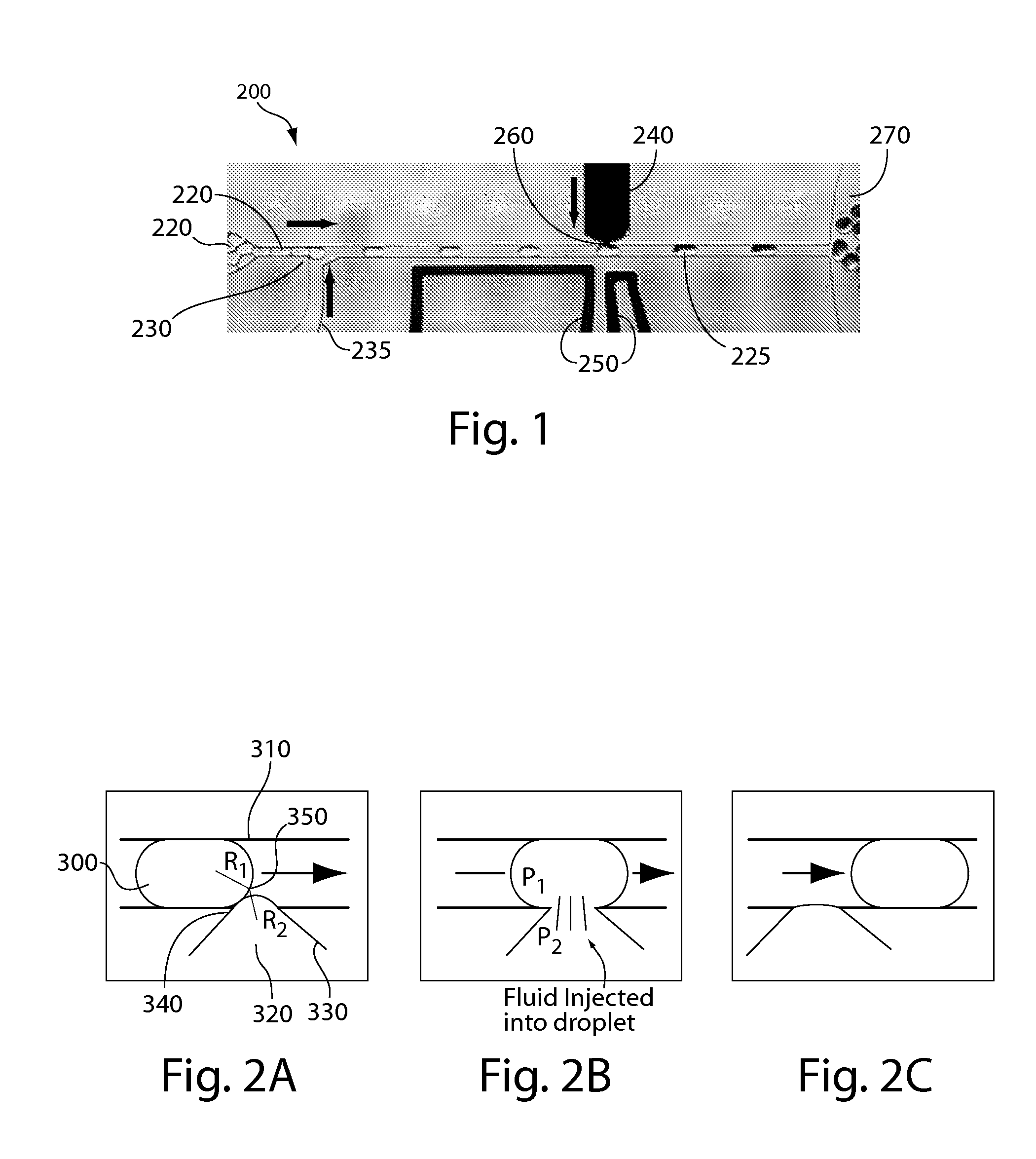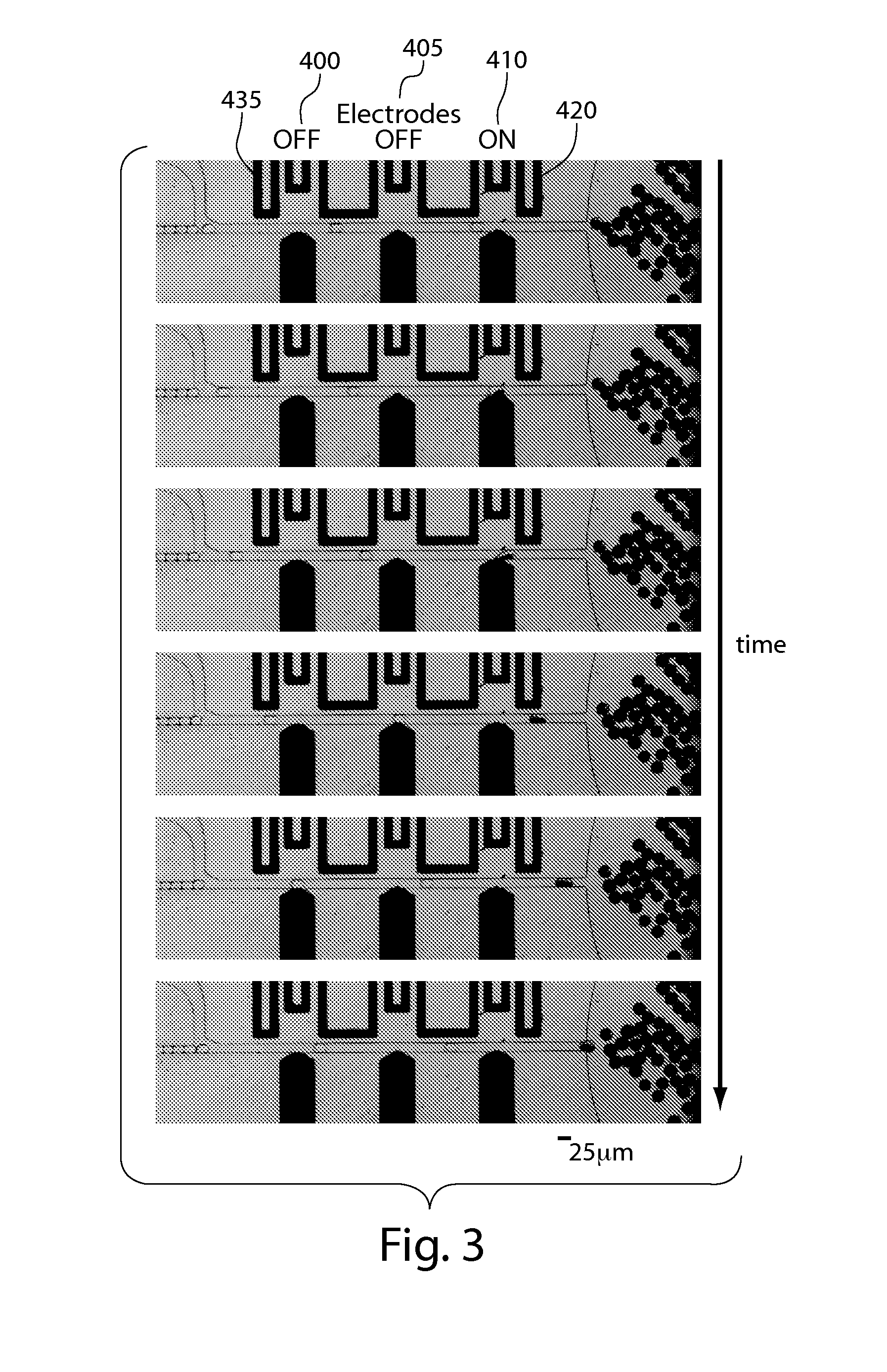Fluid injection
a technology of fluid injection and injection chamber, which is applied in the field of fluid injection systems and methods, can solve problems such as difficulty in control
- Summary
- Abstract
- Description
- Claims
- Application Information
AI Technical Summary
Benefits of technology
Problems solved by technology
Method used
Image
Examples
example 1
EXAMPLE 1
[0128]This example demonstrates fluid injection into fluidic droplets. In each of Examples 1, 2, and 3, single-layer PDMS microfluidic devices such as those shown in FIGS. 4A and 4B were fabricated. In these examples, water-in-oil emulsion droplets with relatively low polydispersity flowed past the orifice where an electric field was applied to cause injection of a bromophenol dyed fluid into the droplets. The droplets passed through a serpentine channel (e.g., as shown in FIGS. 4A and 4B) where the bromophenol dye mixed with the fluid inside the droplets. The droplets then flowed past a laser beam / PMT (photomultiplier tube) setup and microscope camera, both of which captured the light intensity inside the droplets. Since the volume of each droplet prior to injection is known and essentially the same, the amount of bromophenol dyed fluid injected could be determined from the change in intensity of the droplet after injection. Measurements from the PMT / laser were compared t...
example 2
EXAMPLE 2
[0129]This example demonstrates control of fluid injection by varying the continuous phase (i.e., the “outer phase”) flow rate. A system similar to that discussed in Example 1 was used for this example. The outer phase flow rate was set by a volume-driven syringe pump and was varied while keeping the other operating conditions (i.e., applied voltage) constant. As shown in FIG. 7A, as the outer phase flow rate increased, the residence time of droplets decreased, resulting in a decrease in the volume of fluid injected. Thus, by controlling the outer phase flow rate, the amount of fluid injected into the droplets could be readily controlled.
example 3
EXAMPLE 3
[0130]This example demonstrates control of fluid injection by varying the injection pressure. A system similar to that discussed in Example 1 was used for this example. The fluid tubing leading into the second channel containing a bromophenol dye was placed in a pressure tight basin fed by regulator-controlled pressurized air. As the injection pressure increased, the injection volume increased, as shown in FIG. 7B (pressure in units of ps). Accordingly, by controlling the injection pressure, the amount of fluid injected into the droplets could be readily controlled.
PUM
 Login to View More
Login to View More Abstract
Description
Claims
Application Information
 Login to View More
Login to View More - R&D
- Intellectual Property
- Life Sciences
- Materials
- Tech Scout
- Unparalleled Data Quality
- Higher Quality Content
- 60% Fewer Hallucinations
Browse by: Latest US Patents, China's latest patents, Technical Efficacy Thesaurus, Application Domain, Technology Topic, Popular Technical Reports.
© 2025 PatSnap. All rights reserved.Legal|Privacy policy|Modern Slavery Act Transparency Statement|Sitemap|About US| Contact US: help@patsnap.com



